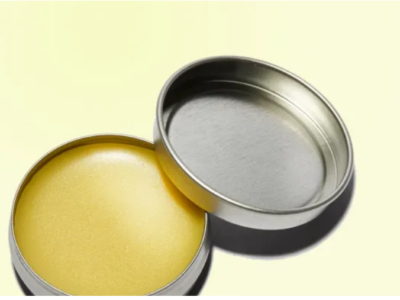Introduction to the Practice Cast
Contents
In the world of medical training and rehabilitation, one tool has emerged as a game-changer: the practice cast. This seemingly simple device is transforming how healthcare professionals develop their skills and how patients recover from injuries. But what makes the practice cast so popular among both practitioners and learners? As we delve deeper into its history, benefits, and various applications, you’ll discover why this innovative approach has captured attention in clinics, classrooms, and beyond. Buckle up for an enlightening journey into the fascinating realm of the practice cast!
History of the Practice Cast
The history of the practice cast dates back several decades. Initially designed for medical training, these casts provided students with realistic scenarios to hone their skills.
As healthcare evolved, so did the tools used in education. The need for effective simulation led to innovations in materials and designs. Early versions were often bulky and less adaptable.
Over time, manufacturers began incorporating lightweight materials that mimic real-life conditions more closely. This shift made practice casts easier to handle while still delivering valuable hands-on experience.
Today’s practice casts are a far cry from their predecessors. They come equipped with features that allow trainees to engage in various procedures effectively.
This evolution reflects broader trends within medical education aimed at enhancing learning outcomes through practical application and reduced error rates during actual patient care.
Benefits of Using a Practice Cast
The practice cast offers a range of benefits for both students and professionals. One of the primary advantages is its ability to facilitate hands-on learning. This immersive experience allows users to apply theoretical knowledge in real-world scenarios.
Another key benefit lies in skill development. With repeated practice, individuals can refine their techniques and boost their confidence. The tactile nature of working with a practice cast enhances muscle memory, making skills more intuitive over time.
Safety is also paramount when using a practice cast. It provides an opportunity to learn without the risks associated with live patients. This makes it ideal for beginners who are still mastering essential procedures.
Moreover, versatility sets the practice cast apart from traditional models. They come in various forms tailored for different specialties—ranging from suturing to casting techniques—which broadens their applicability across disciplines.
Different Varieties and Uses of Practice Casts
Practice casts come in various types, each tailored to specific needs. There are lightweight synthetic versions which mimic the feel of traditional plaster but offer greater durability and water resistance.
Some practice casts focus on specialized skills. For instance, orthopedic training casts help students learn about fracture management. These are often made from a flexible material that allows for easy manipulation while studying techniques.
Another popular variant is the decorative practice cast. These are often used in art classes or therapeutic settings, where creativity can flourish as individuals personalize their designs.
Moreover, certain industries utilize practice casts for practical demonstrations. Medical professionals use them during workshops to refine casting techniques without risking patient safety.
Each type serves its purpose effectively, catering to both educational and artistic aspirations.
Common Misconceptions about Practice Casts
Many people have misconceptions about the practice cast that can lead to misunderstandings. One common belief is that practice casts are only for beginners. In reality, they serve a wide range of skill levels, providing valuable feedback for seasoned practitioners too.
Another myth suggests that these casts are rigid and unyielding. While some may appear stiff, many offer flexibility designed to mimic real-world conditions. This adaptability enhances learning by allowing users to experiment without severe consequences.
Some also think that using a practice cast means avoiding proper training or mentorship. However, it complements traditional methods rather than replacing them.
There’s the notion that all practice casts are created equal. The truth is there’s a diverse array of options tailored for various needs and preferences—ensuring each practitioner finds their perfect fit in this essential tool.
How to Choose the Right Practice Cast for You
Choosing the right practice cast can be a game-changer for your skill development. Start by assessing your specific needs. Are you focusing on technique, strength, or perhaps endurance?
Next, consider the material of the cast. Some are made from lightweight fabrics while others use more rigid materials. Your comfort and flexibility during practice should always come first.
Don’t forget about size! Ensure it fits snugly but isn’t too tight, allowing freedom of movement without compromising support.
Think about your budget. There are options at various price points that still offer quality features.
By carefully evaluating these factors, you’ll find a practice cast tailored to enhance your training sessions effectively.
Conclusion: The Future of Practice Casts
The future of the practice cast looks promising. As technology advances, we can expect innovations that enhance their functionality and usability. Manufacturers are exploring new materials that are lighter yet durable, making them more comfortable for users.
Moreover, educational institutions and training facilities increasingly recognize the value of practice casts in skill development. This trend suggests a growing demand across various fields—be it healthcare or crafts.
As awareness spreads about the benefits of using practice casts, more professionals will likely adopt this tool into their routines. The emphasis on hands-on learning continues to grow, solidifying the role of practice casts as essential resources for mastering skills.
With ongoing research and development, practitioners can anticipate even greater versatility in how these tools can be applied. It’s an exciting time to observe how techniques evolve alongside advancements in the field.
Embracing change is key in any profession, and incorporating innovative tools like the practice cast could play a significant role in shaping future practices.
















